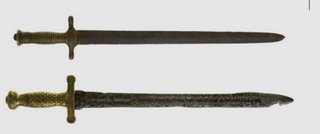
This may be the last post for a week or so. Another evil empire, Qwest, has determined that even though the phone bill is now paid - a month late, my fault - they're still going to shut off the internet and it can't be turned back on until next Wednesday. Good job, phone company! As soon as pracical, I'll be looking for service elsewhere.
Enough whining about my fiscal irresponsibility. I wrote earlier regarding making the casting patterns for the Confederate Sniper's Knife without going into any detail. Essentially I turned them out of wood as if they were vessels of some sort. The pommel like a small cup and the guard like a plate. Judicious cutting away later gave me nice symetrical wood patterns to work with.
Well, in more detail, here's the how of my latest casting pattern:
First of all, at the top of the page is a picture of two artillery short swords. The lower one is the Ames model, used by the US Army in the Mexican War as well as the Civil War and copied by the Confederates. Myself, I've always thought it looked like something Charleton heston would have carried in "Spartacus". The upper one, a European example from the same period (1830's), is tasteful and understated - and easy to turn with no silly eagle pommels or fish scales to carve.
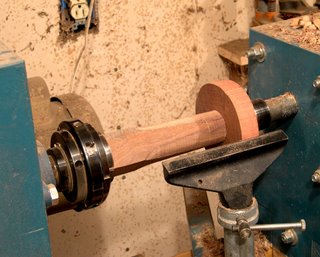
First pic. A disc of bulletwood glued onto a 3/4" stub turned onto the end of a chunk of walnut, as it sits on the lathe.
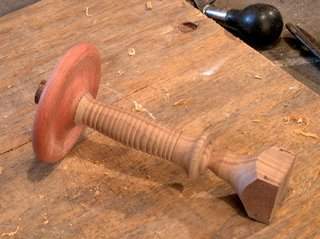
Next, the finished turning. The square block at the pommel end facilitated gripping the piece in the lather chuck.
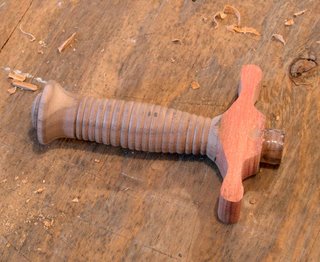
Lastly, some careful cutting away of all the parts of the disc that didn't look like a guard left me with a workable wooden pattern in an hour or so. The next step is to cast it in aluminum and fine-tune it for my final, working pattern.
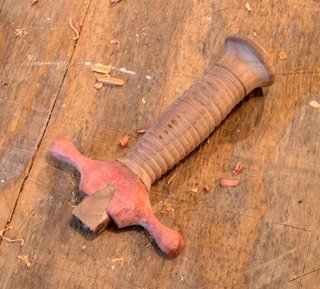










No comments:
Post a Comment